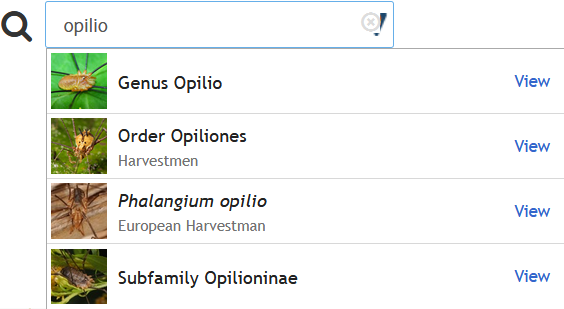pyinaturalist¶





Pyinaturalist is an iNaturalist API client for python.
Features¶
iNaturalist offers a rich source of biodiversity data, and an extensive API to interact with it. If you want to make use of these data in python, then pyinaturalist can help! It adds a number of python-specific conveniences, including:
Requests: Simplified usage with python types and data structures
Responses: Type conversions to things you would expect in python
Server-Friendly Usage: Client-side rate-limiting that follows the API Recommended Practices
Typing: Complete type annotations for request parameters which significantly enhances usability within an IDE, Jupyter notebook, or any other environment with type checking & autocompletion
Docs: Thorough documentation with example requests and responses
Security: Keyring integration for secure credential storage
Testing: A dry-run mode to preview your requests before potentially modifying data
Many of the most relevant API endpoints are included:
Searching for:
controlled terms
identifications
observations (multiple formats)
observation fields
observation species counts
places
projects
species
Text search autocompletion for:
places
species
users
Creating and updating:
observations
observation fields
observation photos
Quickstart¶
Following are usage examples for some of the most commonly used features.
First, install with pip:
pip install pyinaturalist
Then, import the main API functions:
from pyinaturalist import *
Search observations¶
Let’s start by searching for all your own observations. There are
numerous fields you can search on, but we’ll just use user_id for now:
>>> observations = get_observations(user_id='my_username')
The full response will be in JSON format, but we can just print out a few basic details:
>>> for obs in observations['results']:
>>> print(format_observations(obs))
[78242978] Species: Agelastica alni (Alder Leaf Beetle) observed by niconoe on 2021-05-10 18:45:38+01:00 at 1428 Braine-l'Alleud, Belgique
[78218860] Genus: Bradybatus observed by niconoe on 2021-05-10 15:22:49+01:00 at 1428 Braine-l'Alleud, Belgique
...
You can also get observation counts by species. On iNaturalist.org, this information can be found on the ‘Species’ tab of search results. For example, to get the counts of all your own research-grade observations:
>>> counts = get_observation_species_counts(user_id='my_username', quality_grade='research')
>>> print(format_species_counts(counts, align=True))
[48473 ]: Species: Ganoderma applanatum (Artist's bracket): 4
[50310 ]: Species: Arisaema triphyllum (Jack-in-the-pulpit): 4
[50817 ]: Genus: Auricularia (Wood ear fungi): 3
[81599 ]: Species: Silphium perfoliatum (Cup plant): 3
[120215 ]: Species: Bombus griseocollis (Brown-belted Bumble Bee): 2
...
Another useful format is the
observation histogram,
which shows the number of observations over a given interval. The default is month_of_year:
>>> histogram = get_observation_histogram(user_id='my_username')
>>> print(histogram)
{
1: 8, # January
2: 1, # February
3: 19, # March
..., # etc.
}
Create and update observations¶
To create or modify observations, you will first need to log in. This requires creating an iNaturalist app, which will be used to get an access token.
token = get_access_token(
username='my_username',
password='my_password',
app_id='my_app_id',
app_secret='my_app_secret',
)
See Authentication for additional authentication options, including environment variables, keyrings, and password managers.
Now we can create a new observation:
from datetime import datetime
response = create_observation(
taxon_id=54327, # Vespa Crabro
observed_on_string=datetime.now(),
time_zone='Brussels',
description='This is a free text comment for the observation',
tag_list='wasp, Belgium',
latitude=50.647143,
longitude=4.360216,
positional_accuracy=50, # GPS accuracy in meters
access_token=token,
)
# Save the new observation ID
new_observation_id = response[0]['id']
Next we can upload a picture for this observation:
add_photo_to_observation(
new_observation_id,
access_token=token,
photo='/Users/nicolasnoe/vespa.jpg',
)
And then update the observation:
update_observation(
17932425,
access_token=token,
description='updated description !',
)
Search species¶
Let’s say you partially remember either a genus or family name that started with ‘vespi’-something. The taxa endpoint can be used to search by name, rank, and several other criteria
>>> response = get_taxa(q='vespi', rank=['genus', 'family'])
As with observations, there is a lot of information in the response, but we’ll print just a few basic details:
>>> print(format_taxa(response))
[52747] Family: Vespidae (Hornets, Paper Wasps, Potter Wasps, and Allies)
[92786] Genus: Vespicula
[84737] Genus: Vespina
...
Oh, that’s right, it was ‘Vespidae’! Now let’s find all of its subfamilies using its taxon ID from the results above:
>>> response = get_taxa(parent_id=52747)
>>> print(format_taxa(response))
[343248] Subfamily: Polistinae (Paper Wasps)
[ 84738] Subfamily: Vespinae (Hornets and Yellowjackets)
[119344] Subfamily: Eumeninae (Potter and Mason Wasps)
...
Just one last example. There is a taxon autocomplete text search endpoint, which is a bit more niche, and is intended for autocomplete interfaces like the one on iNaturalist.org:

But it also provides an easy way to search the iNaturalist taxonomy database by taxon name. Here is a quick example that will run searches from console input:
while True:
query = input("> ")
response = get_taxa_autocomplete(q=query)
print(format_taxa(response, align=True))
Example usage:
> opilio
[ 527573] Genus Opilio
[ 47367] Order Opiliones (Harvestmen)
[ 84644] Species Phalangium opilio (European Harvestman)
...
> coleo
[ 372759] Subclass Coleoidea (Octopuses, Squids, and Cuttlefishes)
[ 47208] Order Coleoptera (Beetles)
[ 359229] Species Coleotechnites florae (Coleotechnites Flower Moth)
...
<Ctrl-C>
Next Steps¶
For more information, see:
General Usage: general features that apply to most endpoints
Endpoint Summary: a complete list of endpoints wrapped by pyinaturalist
Examples: data visualizations and other examples of things to do with iNaturalist data
Reference: API docs
Contributing Guide: development details for anyone interested in contributing to pyinaturalist
History: details on past and current releases
Issues: planned & proposed features
Feedback¶
If you have any problems, suggestions, or questions about pyinaturalist, please let us know! Just create an issue. Also, PRs are welcome!
Note: pyinaturalist is a volunteer project, not directly affiliated with or endorsed by iNaturalist.org or the California Academy of Sciences. If you have non-python-specific questions about iNaturalist, the iNaturalist Community Forum is the best place to start.
Contents¶
- General Usage
- Endpoint Summary
- Examples
- Reference
- pyinaturalist.node_api module
- pyinaturalist.rest_api module
- pyinaturalist.api_requests module
- pyinaturalist.auth module
- pyinaturalist.constants module
- pyinaturalist.exceptions module
- pyinaturalist.forge_utils module
- pyinaturalist.formatters module
- pyinaturalist.pagination module
- pyinaturalist.request_params module
- pyinaturalist.response_format module
- Contributing
- Authors
- History